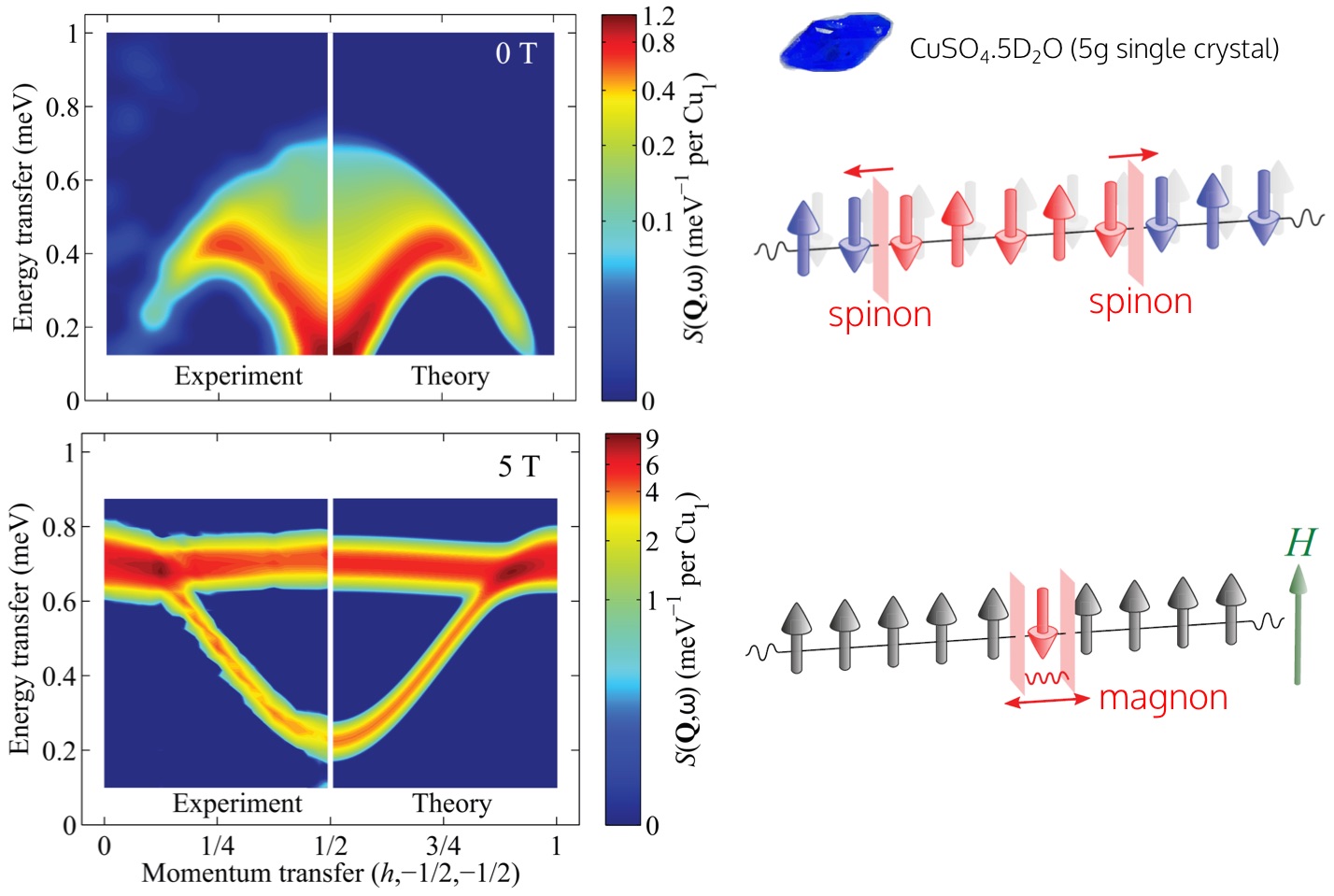See our talks on recent topics:
Inelastic Neutron Scattering in the Quasiparticle Zoo: Magnons, Spinons, Bound States, and Their Interactions
Continuous magnetic spectra in absence of quasiparticle fractionalization
Anomalous excitation spectra of conventional magnets
For a general introduction to our research, you may be interested in the following presentation targetted at undergraduate and graduate students in STEM fields:
Spin Dynamics in Quantum Materials
Our research
group aims at a fundamental understanding of complex and emergent electronic
phenomena in a wide range of bulk materials. Our current efforts focus on
quantum and frustrated magnets and correlated electrons systems. In these
materials, collective atomic-scale effects involving charge, orbital, spin and
lattice degrees of freedom lead to macroscopic properties that are difficult
to predict theoretically but are of fundamental or applied importance. Neutron
scattering is our primary tool and performed at user facilities such as Oak
Ridge National Laboratory. Neutrons are neutral subatomic particles carrying a
small magnetic moment and can scatter from unpaired electrons in the bulk of a
variety of samples. The resulting interference patterns reveal the static and
dynamic properties of matter at the nanoscale and for energies ranging from a
few micro-eV up to more than one eV. See more details about neutron
scattering, our research strategy and recent research examples below.
Neutron Scattering
Uniquely probes matter at the nanoscale. Neutron scattering is a
microscopic probe of the static and dynamic correlations between unpaired
electrons’ spins and is applicable to a wide range of materials. The energy
dependence of these correlations encodes the nature and the interaction
between collective excitations or quasiparticles responsible for the
properties of magnetic matter.
Requires well characterized and optimized samples. Because neutrons interact weakly with electrons’ spins they are a truly bulk probe. Carefully optimized and usually large polycrystalline or single-crystal samples are required for successful experiments.
Produces large datasets. Scattering experiments performed on state of the art neutron instruments at national laboratories such as the National Institute of Standards and Technology (NIST) and Oak Ridge National Laboratory (ORNL) produce large and rich datasets. High throughput data analysis and stewardship is a crucial task of our research.
Provides a quantitative measurement. Proportional to the dynamic structure factor, the neutron scattering cross-section can be directly and unambiguously compared to predictions from theory. As such, it is a unique gateway to understand quantum many-body effects in real materials.

Research Strategy
Integrated. Our research combines laboratory-based materials
preparation, optimization and characterization, neutron and x-ray
scattering at large-scale facilities, high-throughput data analysis and
theoretical modeling to quantitatively address fundamental questions in
quantum condensed matter physics and materials science.
Collaborative. By probing quantum materials at the nanoscale using neutron and x-ray scattering and elucidating their static and dynamic properties we strive to participate in the fertile feedback loop between condensed matter theory, neutron scattering, and materials discovery.
Laboratory at Georgia Tech. A laboratory for sample growth and characterization is currently under renovation in the School of Physics’ Howey building at Georgia Tech. A 14T Quantum Design Physical Properties Measurement System has already been delivered. Our data analysis capabilities rely on Georgia Tech’s Partnership for Advanced Computing and are now fully operational. See our lab tour for more details and news.

Example: Fractional excitations in quantum magnets
Magnons are ubiquitous quasiparticles to describe the excitation
spectrum of magnetic insulators and identified by a well defined
momentum-energy dispersion relation. Neutron experiments on crystals of
chain and square-lattice quantum magnets revealed continuous, rather than
sharp, excitation spectra indicating the breakdown of magnons into pairs
of fractional excitations known as spinons. The deconfinement of the
latter, a purely quantum effect, can be controlled by a magnetic field,
gradually binding S = 1/2 spinon pairs back into S = 1 magnons.
For more details see: M. Mourigal et al., Nature Physics
9, 435-441 (2013) and
B. Dalla Piazza et al., Nature Physics 11, 62-68 (2015).

Example: Spin-orbital magnetism in BaFe2Se3
Broadband inelastic neutron scattering on the ladder compound
BaFe2Se3 unraveled the spectroscopic footprints of the
Fe4 block state, an exotic spin arrangement stabilized by complex
orbital patterns in iron-based magnets and superconductors. The interplay
between spin and orbital degrees of freedom plays a key role in iron bearing
superconductors and offers new avenues to create exotic magnetic states. In
our quantitative inelastic neutron scattering investigation we corroborated
theoretical work suggesting that complex spin-orbital phenomena can conspire
to form a new kind of Mott insulator where localized and itinerant electrons
coexist. For more details see:
M. Mourigal et al., Physical Review Letters 115, 047401(2015).

